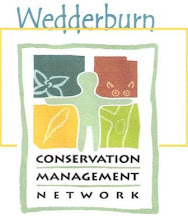
We have confirmed the occurrence of a very rare orchid – the northern golden moths or Diuris protena – at Bush Heritage Australia’s Nardoo Hills reserves. The newly described orchid was listed under the Flora and Fauna Guarantee Act in 2007, and is only found in Victoria where it is classified as endangered. The orchid was first discovered and described in 2006 in the grasslands of Terrick Terrick National Park c.60 km to the north-east of the Nardoo Hills. Although a number of populations have been recorded from grassy remnants in recent years, many sites are very small and vulnerable to a range of threats. The Nardoo Hills population of over 400 plants is the largest in Australia, and occurs in species-rich grassy yellow box woodland on the slopes of Mount Kerang.
Bush Heritage’s ecologist David Baker-Gabb first spotted the orchid last year and alerted Deanna Marshall, Senior Flora Officer with the Department of Sustainability and Environment. They then had to wait for the plant to flower again before it could be collected and formally confirmed. The wait was worth it, says Deanna. ‘It’s a really significant find because of the population size and because it’s on secure land.’ The discovery is very good news for the orchid’s long- term survival.
The presence of the orchid at Nardoo Hills suggests that restoration work at the reserve is really paying off. As Bush Heritage ecologist Paul Foreman says, ‘I’m sure all that rabbit and weed control work done by David Baker-Gabb, Jeroen Van Veen and many volunteers has had something to do with it.’ Previously grazing by rabbits and stock would have restricted flowering and therefore threatened the orchid’s long-term survival on the property.
Discussions with the Victorian Herbarium indicate that the likely pollinator for the orchid is a native bee that also pollinates bulbine lilies that are similar in size and colour to the orchid. Bulbine lilies are widespread across the Nardoo Hills.
The Victorian Herbarium is keen to collect seed from the population as a contribution to the Millennium Seed Bank Project. The Royal Botanic Gardens at Kew, UK, are running the project, which aims to conserve 10 per cent of the world’s wild plant species by 2010 – concentrating on the ‘rarest, most threatened and most useful species known to man’.
This article has been reproduced with the kind permission of the editor of the Newsletter of Australian Bush Heritage.

No comments:
Post a Comment